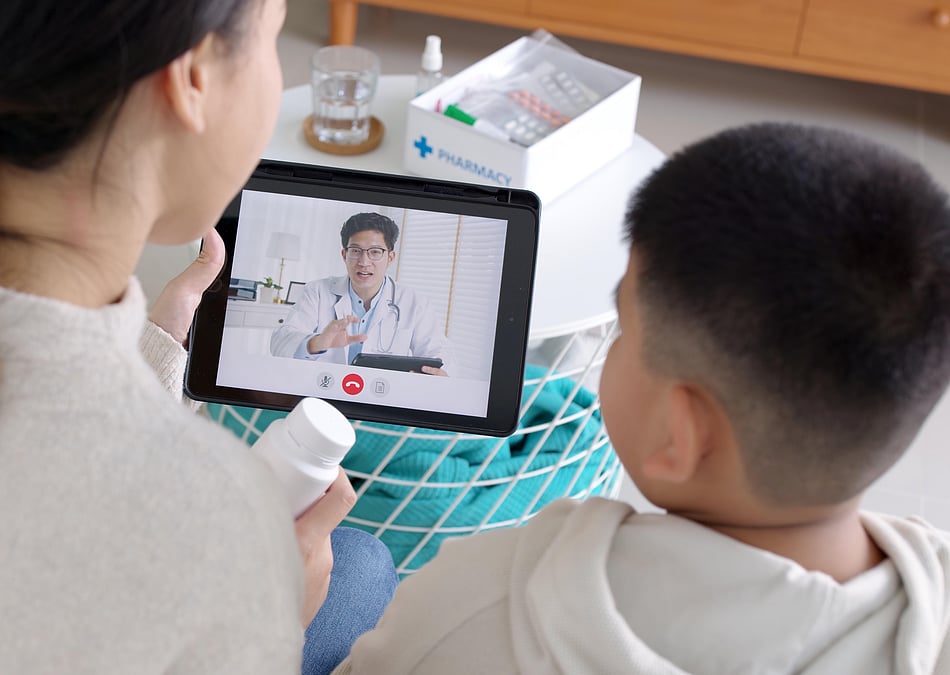Thorough Telemedicine Reviews: Assessing the Best Platforms for Remote Health
Thorough Telemedicine Reviews: Assessing the Best Platforms for Remote Health
Blog Article
Embracing Telemedicine: Transforming Health Care Delivery for a Modern World
The landscape of health care distribution is undertaking a significant shift propelled by technical advancements, with telemedicine arising as a critical part in this improvement. As we browse an age identified by quick digitalization and advancing individual demands, the assimilation of telemedicine into standard healthcare techniques provides an engaging proposal. This innovative strategy not just holds the assurance of improving ease of access to care but likewise stands to reinvent the dynamics of patient-provider interactions. In discovering the effects and complexities of accepting telemedicine, a nuanced understanding of its complex influence on health care shipment in the modern-day globe comes to be critical.
The Development of Telemedicine
Telemedicine has undertaken substantial evolution over the past couple of decades, changing the landscape of health care distribution. Developed to bridge the space in between medical care carriers and people in remote areas, telemedicine has actually now broadened its reach to provide a wide array of clinical solutions with technological innovations.
In the onset, telemedicine mainly included consultations via telephone or video clip conferencing. With the expansion of electronic devices and platforms, health care specialists can now from another location keep an eye on crucial signs, conduct online evaluations, and also do certain clinical treatments. This change towards even more detailed digital care has actually transformed the means healthcare is provided, making it extra practical and available for patients.
In addition, the combination of electronic health and wellness documents (EHRs) and telemedicine has actually improved coordination amongst medical care teams, bring about extra reliable and joint patient treatment. Telemedicine reviews. With the ongoing improvements in fabricated intelligence and remote monitoring gadgets, telemedicine is poised to continue developing, providing ingenious remedies to enhance health care results globally

Advantages of Telemedicine Adoption
As the utilization of telemedicine has broadened to encompass a broader spectrum of technical capabilities and clinical services, the advantages of its adoption in contemporary health care delivery have become increasingly apparent. One of the key benefits of telemedicine is boosted access to health care services, especially for people in remote or underserved locations. Individuals can currently consult with doctor without the demand for prolonged travel, lowering both time and expense obstacles. Furthermore, telemedicine enhances convenience for patients by allowing them to schedule appointments at times that suit their timetables, promoting better adherence to therapy strategies.
Furthermore, telemedicine can lead to enhanced wellness end results with boosted treatment control. Telemedicine can assist ease stress on typical medical care systems by minimizing congestion in healthcare facilities and centers, eventually improving total performance and patient satisfaction.
Overcoming Telemedicine Difficulties
Attending to the obstacles inherent in incorporating telemedicine into existing medical care systems offers an essential yet surmountable challenge for doctor worldwide. One significant obstacle is the resistance to alter amongst both health care specialists and clients. Convincing traditional doctor to take on telemedicine calls for detailed training programs and continual assistance to make sure smooth integration. Patients might be hesitant to accept virtual examinations due to concerns regarding the high quality of care or an absence of familiarity with the modern technology.
Furthermore, regulative obstacles and go to this site repayment restrictions posture substantial obstacles to the widespread implementation of telemedicine. Varying state and country regulations relating to telemedicine techniques create an intricate environment for carriers to navigate. Repayment policies that do not adequately compensate for telemedicine services can prevent healthcare organizations from buying this ingenious strategy to care distribution.

Enhancing Patient-Provider Interaction
Browsing the landscape of telemedicine challenges illuminates the crucial requirement for improving patient-provider interaction in modern healthcare distribution systems - Telemedicine reviews. Effective communication exists at the heart of quality healthcare provision, and in the world of telemedicine, where physical cues might be limited, compassionate and clear interaction ends up being even extra critical
Enhancing patient-provider interaction in telemedicine involves different strategies. Giving clear directions, establishing sensible assumptions, and ensuring open lines of interaction for follow-up queries can improve the general patient experience in telemedicine.
Future Trends in Telemedicine
Anticipating the development of telemedicine, innovations in modern technology and healthcare shipment systems are leading the way for ingenious methods to client treatment. Among the future fads in telemedicine is the assimilation of expert system (AI) and equipment learning algorithms to improve diagnostic abilities. AI can examine large amounts of client data promptly, assisting medical care providers in making a lot more exact medical diagnoses and treatment decisions. Furthermore, making use of digital fact (VR) and boosted fact (AR) in telemedicine is gaining energy. These innovations can develop immersive experiences for both providers and patients, assisting in digital appointments and medical training simulations.
Additionally, the development of telemedicine solutions to underserved rural and remote locations is an essential fad. By see this leveraging telemedicine, healthcare providers can reach patients in remote places, improving access to quality care. One more pattern is the ongoing growth of remote surveillance tools and wearable modern technology, permitting real-time tracking of client health metrics from a range. These developments in telemedicine hold terrific promise for transforming medical care shipment and boosting patient end results in the future.
Verdict
To conclude, telemedicine has reinvented medical care distribution by boosting access to care, boosting efficiency, and improving individual outcomes. Despite difficulties, the advantages of telemedicine adoption are clear, leading the way for better patient-provider communication and future advancements in healthcare. As innovation continues to develop, telemedicine will certainly play a critical role in changing healthcare shipment for a contemporary world.

Expecting the evolution of telemedicine, developments in technology and healthcare distribution systems are paving the way for ingenious techniques to individual resource treatment. These advancements in telemedicine hold great promise for changing medical care shipment and improving patient end results in the future.
In verdict, telemedicine has reinvented health care distribution by improving accessibility to care, increasing efficiency, and improving individual outcomes.
Report this page